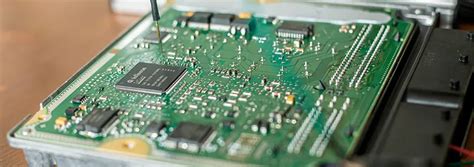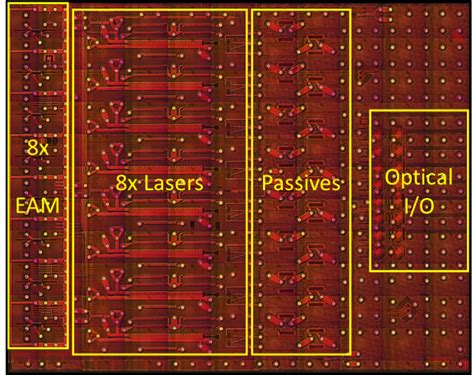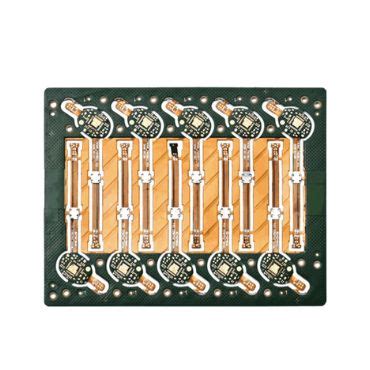Transforming Innovation: The Future of Custom Electronic Assembly
Key Takeaways
The landscape of custom electronic assembly is rapidly evolving, influenced by a myriad of technological advancements and shifting market demands. At the forefront of this transformation is pcb assembly, which plays a crucial role in the creation of sophisticated electronics. The integration of advanced software tools and machine learning algorithms streamlines the pcba process, enhancing efficiency and reducing time-to-market for customized products. Industry trends indicate a growing emphasis on modular designs, enabling manufacturers to swiftly adapt their offerings to meet specific customer requirements. Furthermore, the push towards sustainable practices is reshaping manufacturing processes within the realm of custom assemblies, urging companies to adopt eco-friendly materials and techniques. As various sectors—from healthcare to consumer electronics—continue to seek personalized solutions, the role of custom electronic assembly becomes increasingly pivotal in addressing diverse needs while navigating future challenges such as supply chain fluctuations and technological integration.
The Evolution of Custom Electronic Assembly: A Historical Perspective
The journey of custom electronic assembly has been transformative, reflecting the rapid advancements in technology and the evolving demands of industries. Starting in the mid-20th century, the field was characterized by manual labor and limited technology, focusing on basic PCB assembly techniques. Early assemblies were often bulky and inefficient, serving primarily standard applications. However, with the introduction of more sophisticated electronic components and automation in manufacturing processes, the landscape began to change dramatically.
By incorporating surface mount technology (SMT) into PCBA practices, manufacturers were able to produce smaller, more efficient circuits that catered to a broader range of applications. This evolution laid the groundwork for deeply integrated systems in consumer electronics, medical devices, and telecommunications among other sectors. As customization became paramount for product differentiation, companies started leveraging software-driven methodologies for design and prototyping which significantly enhanced their capacity for unique configurations.
The advent of computer-aided design (CAD) tools revolutionized how designers approached layouts for printed circuit boards (PCBs) and microcontrollers. These tools allowed for precision in creation that was previously unattainable with manual processes. As demand surged across various industries—from automotive to aerospace—the necessity for more intricate pcba solutions became increasingly clear.
Currently, custom electronic assembly stands at a crucial intersection of innovation and necessity, continually adapting to integrate emerging technologies such as artificial intelligence (AI) and the Internet of Things (IoT). The past few decades have taught manufacturers that flexibility in design is essential not just for staying competitive but also for meeting customer-specific requirements effectively. As such, custom electronic assembly is no longer merely about assembling components; it is increasingly about developing intuitive systems that respond to the diverse needs of users globally.
Key Technologies Shaping the Future of Custom Electronic Assembly
The landscape of custom electronic assembly is being significantly molded by several emerging technologies that promise to enhance efficiency, quality, and adaptability in production processes. Central to this transformation are advancements in printed circuit board assembly (pcb assembly) techniques that enable the integration of complex functionalities into compact designs. The evolution of machine learning and automation is facilitating smarter manufacturing environments, where systems can analyze and optimize production flows in real-time. Furthermore, the rise of internet of things (IoT) devices is pushing the boundaries on how pcba functions within interconnected systems.
As industries continue to leverage 3D printing, prototyping and testing processes are becoming faster, allowing for more rapid iteration and innovation on custom designs. This technology not only reduces waste but also lowers costs associated with traditional manufacturing practices. Companies are now able to produce highly specialized components tailored to specific needs, fostering an environment ripe for personalization.
“Adopting cutting-edge technology in assembly can be a game-changer for businesses looking to differentiate their products in an increasingly competitive environment.”
Moreover, advances in materials science are contributing to more durable and efficient manufacturing options. By utilizing new, high-performance materials, manufacturers can create custom electronic assemblies that withstand more rigorous conditions while also enhancing energy efficiency.
The integration of these technologies signifies a critical path toward customizing electronics that meet the diverse demands of various sectors including healthcare, automotive, and consumer electronics. As we look ahead, it’s evident that these key technologies will not only shape the operational capabilities but also redefine the possibilities for innovation within the custom electronic assembly industry.

Industry Trends Influencing Personalized Electronics Designs
The landscape of custom electronic assembly is increasingly shaped by evolving industry trends that cater to the demand for more personalized electronics. One major trend is the rise of Internet of Things (IoT) devices, which has created a substantial need for compact, efficient pcb assembly solutions that can integrate myriad functionalities. Furthermore, advancements in manufacturing technologies have allowed for more precise and rapid pcba practices, enabling manufacturers to tailor designs based on user-specific requirements. The shift toward miniaturization has also driven the need for innovative assembly methods that ensure component density without compromising functionality. Additionally, there is a growing emphasis on user experience, prompting designers to focus not just on performance but also on aesthetics and ease of use in their products. As diverse industries embrace these trends—from healthcare devices that require intricate customizations to high-performance consumer electronics—understanding these influences becomes crucial for companies aiming to remain competitive in the ever-expanding market for personalized electronics. The integration of advanced materials and smart technologies further enhances possibilities in custom electronic assembly, ultimately leading to products that are not only efficient but are also tailored individually to meet unique consumer needs.

Innovations in Manufacturing Processes for Custom Assemblies
The landscape of custom electronic assembly has evolved significantly, driven by innovations in manufacturing processes. Techniques such as additive manufacturing, more commonly known as 3D printing, allow for rapid prototyping and design iterations, enabling manufacturers to create highly complex structures that were once deemed impossible. Moreover, the integration of automation and robotics into the assembly line has enhanced efficiency, precision, and scalability in the production of printed circuit boards (PCB assembly) and their subsequent assembly (PCBA). These advancements not only streamline operations but also reduce human error, which is critical in maintaining the quality standards required for modern electronics.
Furthermore, advanced software solutions leveraging artificial intelligence provide invaluable support in optimizing production workflows and real-time monitoring systems. By analyzing data analytics from the manufacturing process, companies can predict potential failures or bottlenecks before they impact output. This alignment of digital technologies with traditional manufacturing processes marks a significant shift towards intelligent manufacturing, ensuring that custom assemblies can be tailored to specific client requirements with unparalleled efficiency. As industries continue to demand more individualized solutions, innovations in these manufacturing processes will be pivotal in delivering high-quality PCB assembly and PCBA, catering to diverse applications across various sectors.
Meeting Diverse Needs: The Role of Custom Electronic Assembly in Various Sectors
Custom electronic assembly, particularly PCB assembly and PCBA, plays a critical role in various sectors, addressing the unique requirements of diverse industries. As technology progresses, the demand for tailored solutions in electronics has become increasingly important. This adaptability ensures that both consumer and industrial needs are met effectively.
In the healthcare sector, for example, custom electronic assemblies are utilized in medical devices that require precise functionality and reliability. These devices often integrate advanced features such as remote monitoring capabilities and real-time data analysis, necessitating bespoke solutions through high-quality PCB assembly. Similarly, the automotive industry relies on custom electronic assemblies for innovative applications such as driver assistance systems and electric vehicle components.
| Sector | Application | Benefits |
|---|---|---|
| Healthcare | Medical devices (e.g., heart monitors) | Enhanced reliability and patient-specific features |
| Automotive | Electric vehicle control units | Tailored functionalities improve safety |
| Consumer Electronics | Wearable devices | Customization leads to better user experience |
Moreover, the aerospace industry demands stringent quality standards; hence, customized electronic assemblies are designed to meet rigorous testing and performance criteria. These assemblies often involve complex designs that improve operational efficiency while ensuring safety during critical operations.
In conclusion, as industries continue to evolve with technological advancements, the role of custom electronic assembly through PCBA remains indispensable. This evolution not only meets existing demands but also anticipates future needs across a multitude of sectors, shaping a landscape where personalized electronics become standard rather than exception.
Environmental Sustainability in Custom Electronic Assembly Practices
In the quest for innovation within the custom electronic assembly sector, environmental sustainability has become a focal point of modern manufacturing practices. As companies strive to reduce their ecological footprints, incorporating sustainable techniques into pcb assembly processes is imperative. Utilizing eco-friendly materials not only minimizes waste but also enhances the efficiency of pcba operations. Advanced technologies such as automated assembly lines and smart manufacturing solutions contribute significantly to optimizing resource consumption. Furthermore, recycling and reusing components play a crucial role in mitigating the environmental impact of electronic waste. By establishing closed-loop systems and emphasizing green design principles, manufacturers are better equipped to meet regulatory requirements while appealing to environmentally conscious consumers. The transition towards sustainability in custom electronic assembly not only reflects corporate responsibility but also positions companies favorably in a competitive market increasingly influenced by consumer preferences for sustainable products. Thus, by integrating sustainability into their core practices, organizations can innovate while ensuring they contribute positively to both society and the environment.
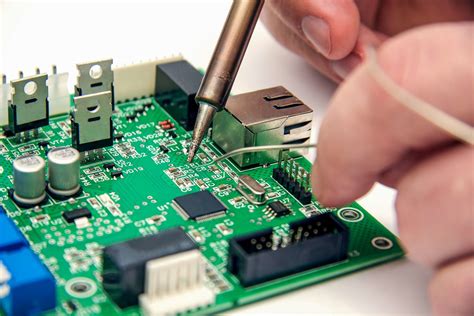
Future Challenges and Opportunities in the Custom Electronics Industry
The landscape of custom electronic assembly is evolving rapidly, presenting both challenges and opportunities for stakeholders within the industry. As advancements in technology accelerate, the demand for intricate pcb assembly solutions and pcba services rises. Companies must adapt to varying consumer expectations for personalized electronic devices while maintaining efficiency in production. Overcoming supply chain disruptions remains a significant challenge, as sourcing quality components becomes increasingly complex. However, this also opens up avenues for innovation; manufacturers have the chance to explore alternative materials and production methods that could streamline operations and reduce costs.
Moreover, as industries demand more sustainable practices, there is an opportunity for companies to exhibit leadership in environmental responsibility within their custom electronic assembly processes. By integrating green manufacturing practices, businesses can distinguish themselves from competitors while appealing to a more eco-conscious consumer base. Collaboration with technology providers to develop smart assembly lines can further enhance flexibility and responsiveness to market demands.
Ultimately, while the challenges are considerable, they are matched by the potential for significant growth in the custom electronics industry. Emphasizing adaptability, sustainability, and technological integration will define the path forward in navigating this dynamic environment effectively.
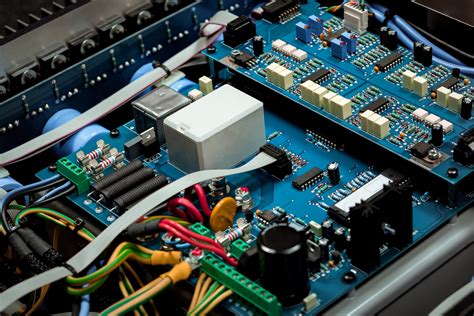
Case Studies: Successful Implementations of Custom Electronic Assembly Solutions
The landscape of custom electronic assembly has been significantly enriched by successful case studies that demonstrate its practical applications and benefits across various industries. One prominent example involves the use of PCB assembly in the medical field, where precision and reliability are paramount. A leading healthcare technology company collaborated with a pcba provider to design a tailored solution for a complex diagnostic device. Integrating advanced sensors on a compact printed circuit board (PCB) allowed the device to deliver accurate real-time data, significantly improving patient outcomes.
Another notable case occurs in the automotive sector, where manufacturers are increasingly adopting custom electronic assembly to enhance vehicle features and performance. A prominent automotive brand implemented a personalized assembly solution for its infotainment systems, allowing for seamless integration of user preferences through customized software and hardware components. By utilizing advanced pcba techniques, the manufacturer could achieve superior functionality while minimizing production costs.
These examples illustrate how innovative approaches in custom electronic assembly foster not only operational efficiency but also cater to evolving market demands. As industries continue to embrace these tailored solutions, they pave the way for future innovations that hold significant potential for transforming various fields, from consumer electronics to industrial applications. The successful implementations documented in these case studies attest to the importance of leveraging advanced technologies within the realm of pcb assembly, thereby underscoring its vital role in driving innovation forward.
Conclusion
In summary, the landscape of custom electronic assembly is increasingly becoming a cornerstone of modern electronic design and innovation. As we’ve explored, pcb assembly and its nuances are reshaping how manufacturers approach personalized electronics. The advancements in pcba technology are vital for integrating complex functionalities into compact designs, catering to the growing demand for tailored solutions across various industries. Furthermore, the emphasis on environmental sustainability speaks to the industry’s responsibility in mitigating ecological impact while delivering high-quality electronics. As trends evolve and new challenges arise, the interplay between technology and design will dictate future strategies. Moving forward, it is imperative for innovators and manufacturers to adapt and embrace these developments to foster a more dynamic and responsive electronics market. The future of custom electronic assembly is bright, promising unprecedented opportunities for creativity and progress in meeting diverse needs.
FAQs
What is custom electronic assembly?
Custom electronic assembly, often referred to as pcb assembly or pcba, involves the process of creating tailored electronic components designed to meet specific client needs. This flexible approach allows for the production of unique circuit boards that can be integrated into various applications.
What technologies are used in custom electronic assembly?
Custom electronic assembly employs a range of advanced technologies including surface mount technology (SMT), through-hole techniques, and automated optical inspection (AOI). These innovations help ensure precision in the pcb assembly process and enhance overall product performance.
How does custom electronic assembly influence innovation?
The ability to adapt to specific requirements enables manufacturers to experiment with new ideas and designs. This fosters innovation by allowing customized solutions that cater to emerging market demands and technological advancements.
What industries benefit from custom electronic assembly?
A wide array of sectors benefits from custom electronic assembly, including healthcare, automotive, aerospace, and consumer electronics. By providing tailored solutions, these industries can meet their distinct functional requirements effectively.
Are there sustainability practices in custom electronic assembly?
Yes, many companies are adopting environmentally friendly practices in their pcb assembly methods. This includes utilizing recyclable materials and optimizing manufacturing processes to minimize waste and energy consumption.
For more detailed insights into pcb assembly, please click here: Transform Your Creations

